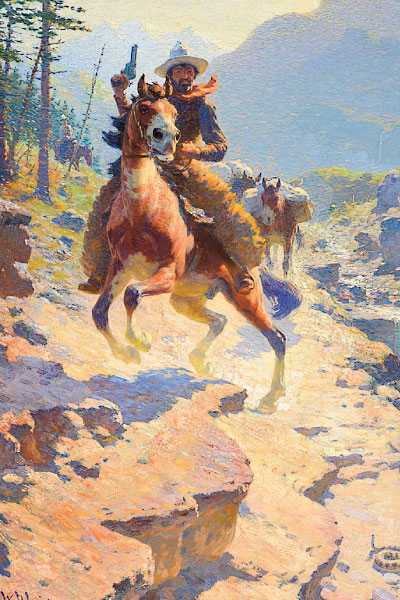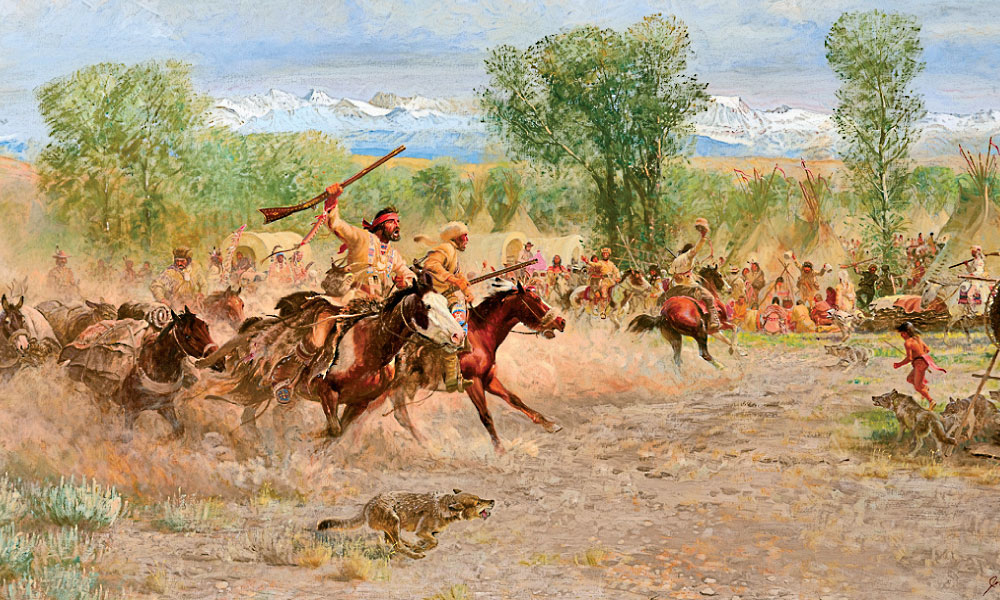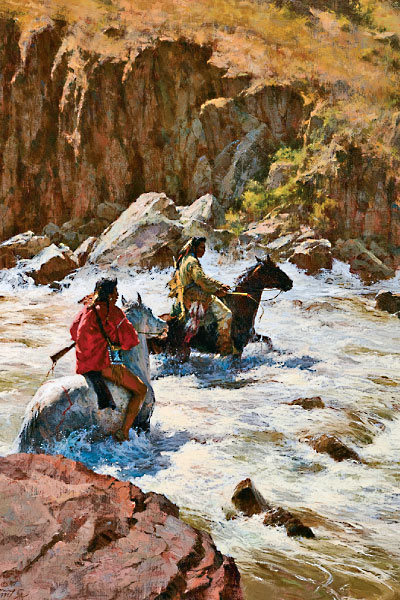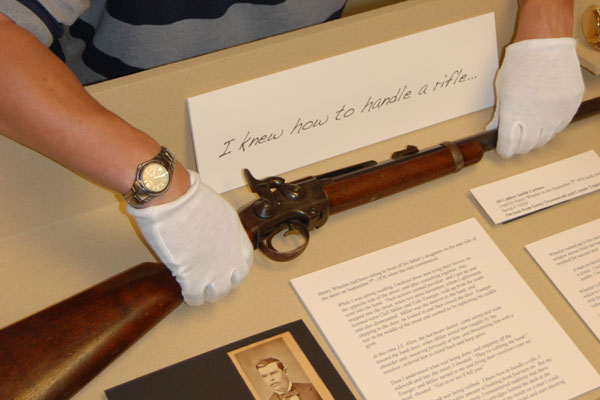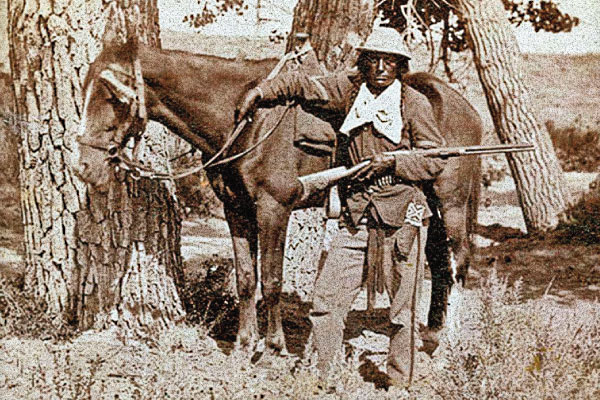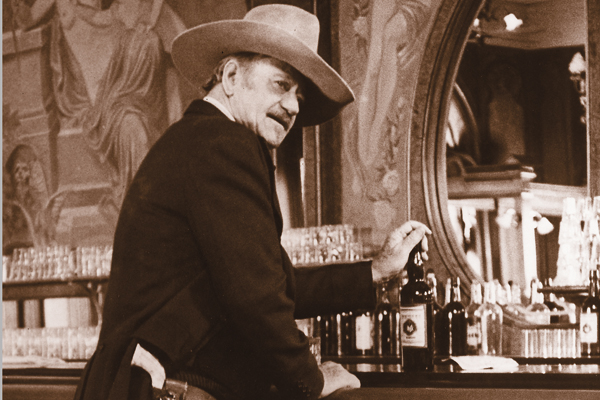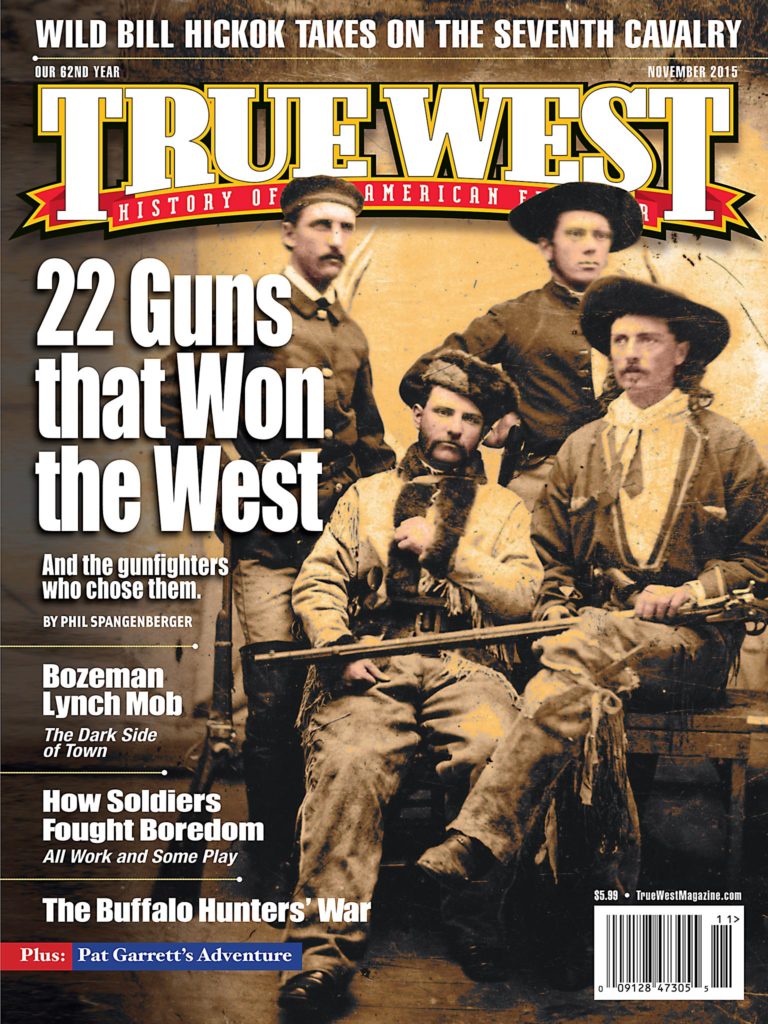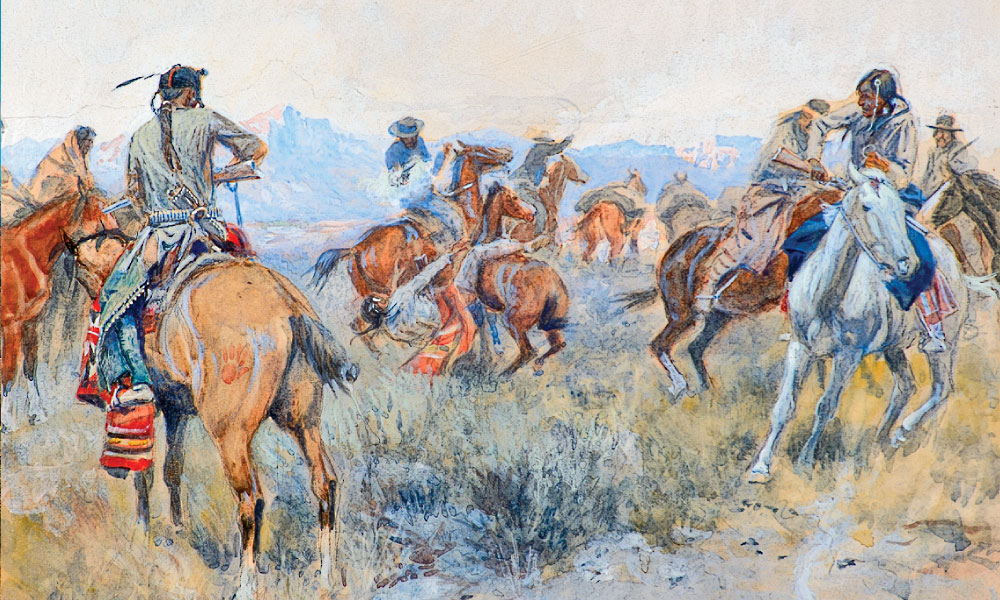
– All images courtesy Coeur d’Alene Art Auction –
“Pard” made perfect sense as a nickname for Robert Strahorn.
After his newspaper work as the first civilian correspondent attached to Gen. George Crook, reporting on the Great Sioux War of 1876, Robert was recruited by Jay Gould, president of the Union Pacific Railroad, to create the railroad’s publicity department and report on the resources of the frontier West. Hired within a week of his marriage to Carrie “Dell” Green, Robert insisted that his bride be allowed to accompany him on all trips throughout the country. In October 1877, the newlyweds set off on their “stage-coach honeymoon.”
The partner Dell followed into an “unknown future” was best described by Crook: “…Bob was every inch a soldier, always the first man to the front when the battle call was on, where he could get his news in the most reliable way, and he never failed to work his rifle as well as his pen.”
Dell wrote a book published in 1911 about those early years “pioneering from the Missouri to the Pacific and from Alaska to Mexico.” Called Fifteen Thousand Miles by Stage, her memoir featured 17 watercolors and 68 pen-and-inks by Montana’s cowboy artist Charles M. Russell.
Hers would be among Russell’s last book commissions. The following year, the artist would complete Lewis and Clark Meeting Indians at Ross’s Hole for the Montana Capitol, for which he was paid $5,000, so he began spending more of his time on his paintings. He did make exceptions to illustrate books by close friends, such as Walter Cooper, Frank B. Linderman and B.M. Bower.
In her book, Dell recorded a memory of traveling to Green River station in Wyoming. Pard pointed out a landmark from a 1,200-mile horseback ride he had made from Salt Lake City, Utah, to Denver, Colorado. While fording a river, his partner, Abbott, drowned. Not wanting to ride to Denver alone, Pard sought out another companion. Having heard that Scotchman Alex Cochrane had left for Salt Lake City, Pard caught up to him. One morning, they awoke at their camp surrounded by about 20 Indians who seemed intent on taking their horses.
The artwork that sold as the top lot, for a $950,000 bid at Coeur d’Alene Art Auction on July 25, illustrates what happened next: “As Cochrane and Pard leaped into their saddles, the former, being immediately opposite the Indian who was mounted upon the colt, put the spurs into his mare, and at the same instant pulled his revolver from its usual resting-place just inside his vest, and shot the Indian.”
After a long chase, the first safe rendezvous Pard and Cochrane found was the little wooded island that Pard was pointing out to his wife. The men luckily made it to Denver without any further serious mishaps.
Pard lives on in this early Russell watercolor, originally purchased directly from the Strahorns after they made their permanent home in Spokane, Washington, in 1898.
Collectors earned more than $23 million on artworks sold at the auction.
